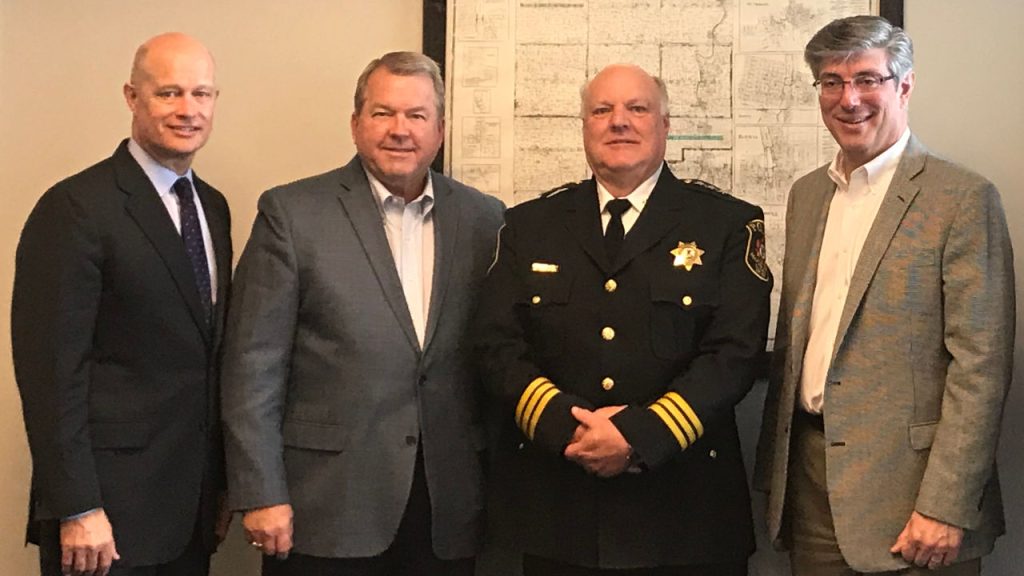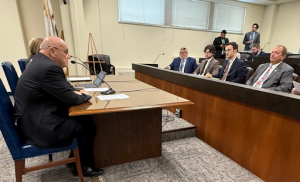In bolstering young children’s learning and development, some of the most concrete investments we can make are those quite literally involving concrete, steel, and other building materials.
Much like fielding a workforce of well-qualified teachers or establishing a robust data system, early childhood facilities form an important part of birth-to-5 programs’ infrastructure. Ensuring adequate, safe, high-quality space for young children’s care and learning has been a longtime concern of the membership groups that comprise Civic Leaders for Illinois Children, and a reason for CLIC’s teaming with state legislators on House Resolution 137 this year.
This bipartisan measure, unanimously adopted by the Illinois House of Representatives in May, calls on top policymakers and the new Illinois Department of Early Childhood to prioritize such facilities needs, starting with their full measurement. After all, the resolution noted, one assessment recently noted the pressing need for building 269 new preK classrooms statewide. However, that study neither captured all school-based space concerns, nor extended its focus to vital services such as child care provided by non-school, community-based entities — all of which should be captured in a new and regularly updated assessment.
“There is an enormous gap in our understanding of the extent of these needs,” ReadyNation member and former Republican state representative Mike Murphy testified before an Illinois House committee in support of HR137 (image at top). A restauranteur who now heads the Greater Springfield Chamber of Commerce, Murphy had written about the economic case for early childhood capital support in the Illinois Times.
“The national Bipartisan Policy Center has reported that investments in early care and learning facilities should be an element of federal, state, and local economic-development strategies.” — from HR137
For years, ReadyNation’s aims for boosting the state’s workforce have combined with the public-safety and national-security concerns of Fight Crime: Invest in Kids and Mission: Readiness to galvanize these groups’ attention to such physical-infrastructure priorities. That’s why they joined a number of allies in 2009 to back the creation of Illinois’ Early Childhood Construction Grant (ECCG) program, a first-of-its-kind state initiative that dedicated $45 million to building new early childhood facilities as well as renovating existing ones in need of repair or upgrades.
Ten years later, the CLIC groups drafted the bipartisan House and Senate resolutions that successfully called for reauthorizing and growing the competitive grant program. Over half of the resulting, $100 million in state funding was awarded to a number of early childhood projects around the state in 2023; CLIC and partners continue to press Illinois leaders to release the construction dollars that remain, and HR137 reiterated that call.

One other notable CLIC contribution to these efforts grew from a meeting that two Fight Crime: Invest in Kids members had with state Sen. Don DeWitte and Rep. Dan Ugaste in 2019.
Former Kane County State’s Attorney Joe McMahon and then-Maple Park Police Chief Dean Stiegemeyer told the freshman lawmakers about early childhood providers’ many facilities needs. This sparked the legislators’ idea for making ECCG participation more fair: Instead of continuing to impose a flat, 10% matching-funds requirement on all grantees, switch to a sliding-scale approach that better-reflects providers’ individual financial capabilities.
It took two years of work by CLIC groups and their allies, but that proposal was rolled into FY22 state budget package to better-reflect the varying circumstances of early childhood providers throughout Illinois.
Such facilities needs were underscored again by the 2021 report of Illinois’ bipartisan Early Childhood Funding Commission, which acknowledged the significance of these bricks-and-mortar matters in ongoing efforts to extend services to all young children whose families seek them. The commission noted the long-term need to “assess the costs of facility footprint expansion across the mixed delivery system” of school-based and community-based services.







